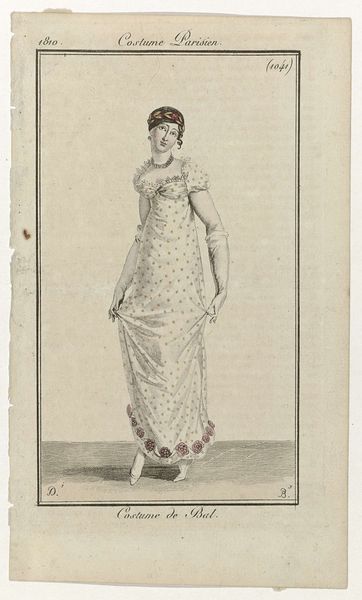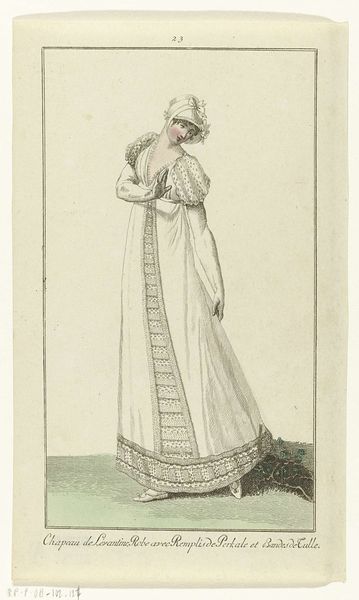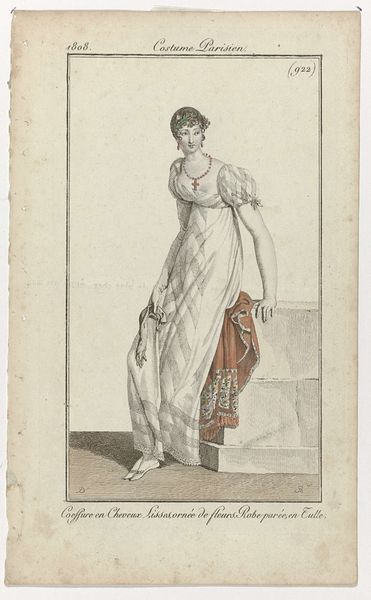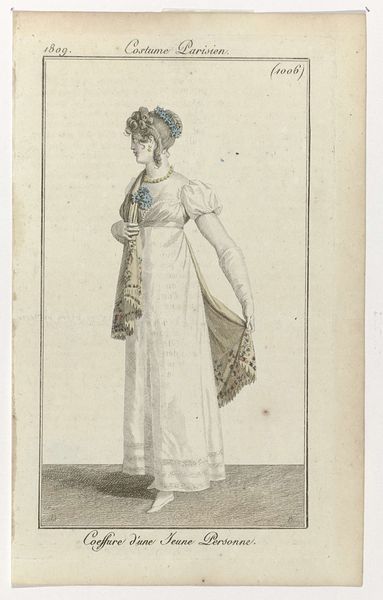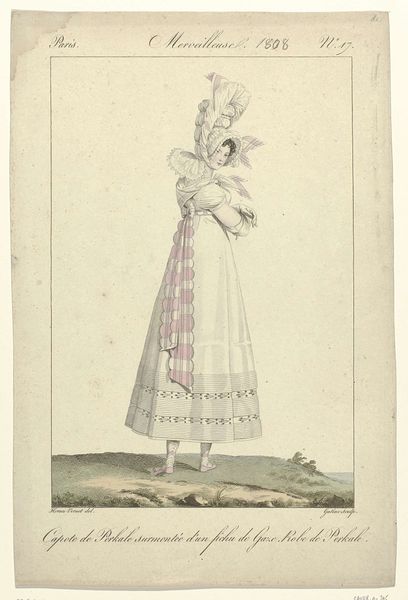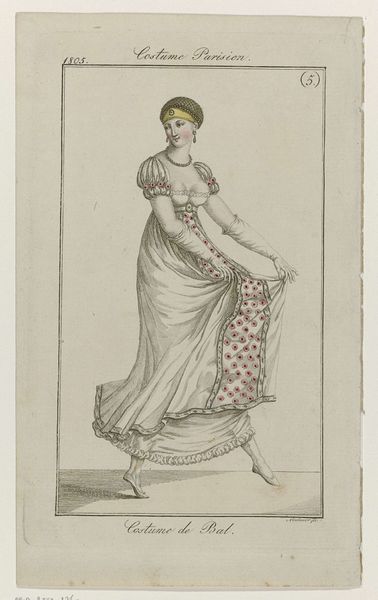
Journal des Dames et des Modes, Costume Parisien, 15 avril 1810, (1053): Coeffure en nattes (...) 1810
0:00
0:00
pierrecharlesbaquoy
Rijksmuseum
print, engraving
#
portrait
#
neoclacissism
# print
#
engraving
Dimensions: height 177 mm, width 108 mm
Copyright: Rijks Museum: Open Domain
Curator: Let's turn our attention to this print from 1810, "Journal des Dames et des Modes, Costume Parisien" by Pierre Charles Baquoy. It's currently held at the Rijksmuseum. Editor: Immediately, I'm struck by the lightness of this work. The delicacy of the lines and the almost ethereal quality of the figure—it feels very Neoclassical in its composition. Curator: Absolutely. This falls squarely within the Neoclassical movement, and it's fascinating to consider how it reflects the era's social and political landscape. These fashion plates weren't simply about clothing; they signified status and adhered to ideals that permeated societal structures. Consider, for instance, how this imagery reinforced gender roles within post-revolutionary France. Editor: Indeed. Notice how the engraver employs very subtle shading techniques. The lines flow with such clarity, and the overall design presents a remarkable harmony of elements. We observe this primarily monochrome scene punctuated with highlights of pale red accenting her adornments. It emphasizes the delicate draping of the gown—quite Grecian, actually—and how that mirrors the idealization of classical beauty. Curator: Precisely. These 'ideals' were complex and often contradictory. The emphasis on the Empire silhouette for women’s dresses promoted a certain visibility within the social sphere, but in tension with an ongoing marginalization when it came to politics. These fashion plates offer insights into these complexities. Who was able to participate in the world and what kind of participation was accessible to them? Editor: The semiotic aspect of this artwork cannot be overlooked either. What signifiers and symbols of the era are presented here and how were they conceived in a broader framework? Curator: Right, we can dive even deeper using feminist theories and cultural studies. It’s a complex task, examining visual representations like these to illuminate unspoken social norms and power dynamics. These images shape perceptions—how the model carries herself. We begin to consider the role and performance of gender and femininity through the artwork. Editor: After considering the formal aspects of Pierre Charles Baquoy’s artwork and exploring this 1810 plate further, it really enhances our experience as viewers in better situating its importance, whether approached formally or from its cultural setting. Curator: It's certainly a useful starting point. And to look at this today we're perhaps bringing our own perspectives and challenging the historical perception this imagery might carry.
Comments
No comments
Be the first to comment and join the conversation on the ultimate creative platform.
